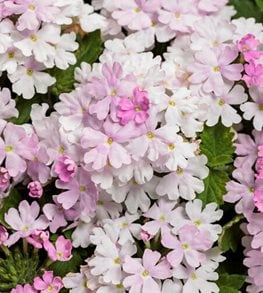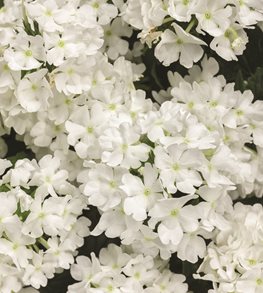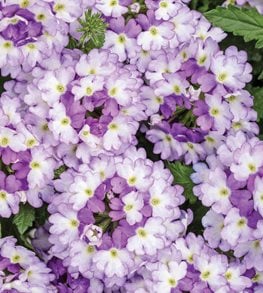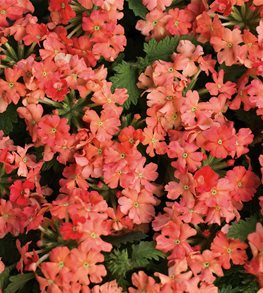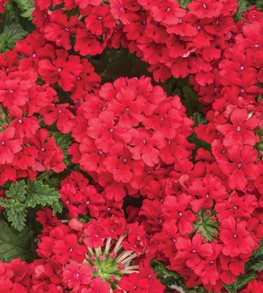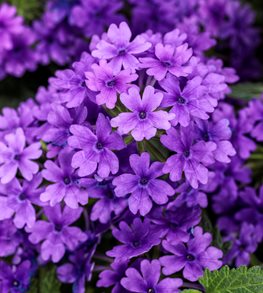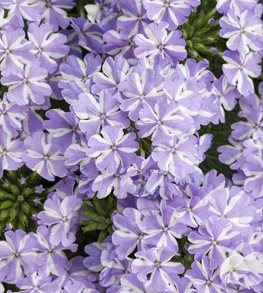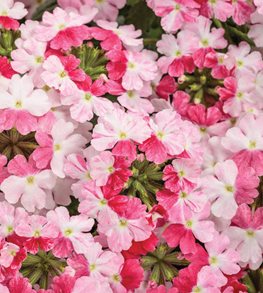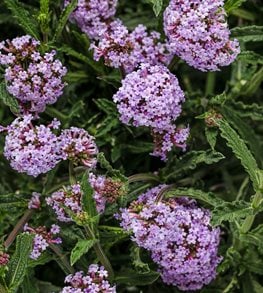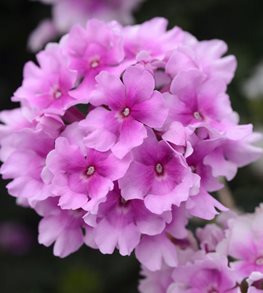Verbena Growing Guide: Long-Lasting Color Made Easy
For a knockout display of color from spring until frost, it’s hard to beat these long-flowering, sun-loving plants Updated 6/27/25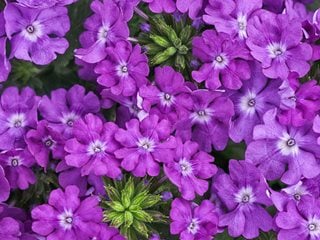
Superbena® Violet Ice. Photo by: Proven Winners.
Vibrant, vigorous, and wonderfully versatile, verbenas are among my favorite flowers for adding va-va-voom to the summer garden. These low-maintenance beauties deliver nonstop color with minimal fuss, and look just as good weaving through garden beds as they do spilling from pots, window boxes, and hanging baskets. They also take heat and drought in stride, making them a top pick for sizzling summer climates.
Although today’s verbena hybrids are more resilient and robust than older varieties, a little TLC goes a long way to keeping your plants healthy and flourishing. In this guide, you’ll learn how to plant and care for verbena to ensure months of dazzling blooms, and get expert troubleshooting tips for solving common problems before they get out of hand.
On this page: Basics | Types | Planting | Care | Pictures | Troubleshooting | FAQ's
On this page:
BASICS
Zones:
Winter hardy in zones 8-11. Garden verbenas (Verbena ×hybrida) are grown as annuals in most climates.
Bloom season:
May through October.
"Sometimes you may have 10 days of amazing blooms, then a bit of a lag. Then, color comes back in full force!" — Growing Beautiful Verbena Flowers, Corey from Up North Garden.
Sun and soil requirements:
Full sun (at least 8 hours a day) and average well-drained soil.
Height/spread:
Varieties range in height from low-growing and trailing to somewhat upright.
Colors and characteristics:
Common garden varieties have tiny, fragrant flowers in saucer-shaped clusters up to 3 inches across. The most common flower colors include shades of pink, red, purple, coral, and blue-violet, as well as bicolored varieties.
Attracts:
Colorful and scented verbena flowers provide a rich source of nectar for pollinators, attracting hummingbirds, bees, and many types of butterflies.
"It's clusters of small, delicate flowers create a carpet of beauty that attracts butterflies and hummingbirds, bringing life and movement to your outdoor space." — Top Flowering Annuals for Summer, Stacy Ling, Bricks 'n Blooms.
TYPES OF VERBENA
Superbena® series:
Verbena hybrids developed by Proven Winners® to be more robust, more mildew resistant, and more resilient than older varieties. They also produce larger flowers in many colors, including bicolored striped patterns.
Tapien® series:
A trailing verbena characterized by a multi-branching growth habit, spreading up to 3 feet to create a dense low-growing carpet of blooms. Also mildew resistant and grow well under a wide range of weather conditions.
Lanai® series:
A semi-trailing verbena characterized by bold patterns, bright colors, and contrasting eyes. It spreads up to 2 feet and has one of the longest bloom seasons. Compact versions with mounded habits are also available.
HOW TO PLANT VERBENA
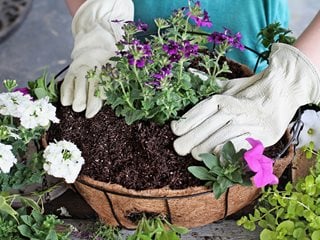
Photo by: Stephanie Frey / Shutterstock.
When to plant:
Midspring or early summer, after the threat of frost has passed.
Where to plant:
Verbena blooms best in a spot that receives at least 6 to 8 hours of direct sunlight daily. Also choose a location with well-draining soil, since verbena hates wet feet. Sandy or loamy soil is ideal. If your soil is heavy, amend it with compost before planting.Growing verbena from seed:
You can grow some types of verbena from seed, with the exception of non-seeding hybrids. Sow seeds indoors 8 to 10 weeks before the last frost date in your area, and transplant the seedlings into outdoor beds once the soil warms up. To give your verbena room to spread, space plants at least 12 to 18 inches apart, depending on the variety.
Growing verbena in containers:
Their trailing growth habit and long-lasting blooms make verbena perfect for window boxes, hanging baskets, or mixed container combinations. Use a pot with drainage holes to prevent soggy roots, and fill the container with a high-quality all-purpose potting mix. Because container plants dry out faster than those in the ground, water when the top inch of soil feels dry to the touch. Avoid overwatering, which can lead to root rot. Learn more about growing plants in containers.
VERBENA CARE
Water requirements:
Although established plants are drought tolerant, they will do better with regular watering, especially container-grown plants. Also, make sure they have good drainage, whether in containers or garden beds, so the roots don’t sit in soggy soil. For the best results, pair with other plants that have similar water requirements.
Fertilizing:
In garden beds, adding a continuous-release fertilizer and enriching the soil with organic matter at the time of planting will usually be sufficient. Otherwise, fertilize container-grown plants regularly with a water-soluble fertilizer.
Pruning and deadheading:
Although most do not require deadheading to keep them blooming, you may want to trim back trailing varieties if they begin to overtake containers or crowd out other plants in the garden. Give them a light trim every now and then for fuller plants and more prolific flowering.
Get more verbena growing tips:
Succeeding with Superbena (from Proven Winners).
PICTURES
TROUBLESHOOTING VERBENA
One of the most fuss-free flowering plants you can grow, verbena suffers from few pest or disease problems. When issues do arise, they are usually due to not enough sunlight or poorly drained soil. Here are some stress signals to look for and potential solutions.
- Leggy plants and sparse flowering are often a result of too much shade. Move them to a spot in the garden where they get 6 or more hours of sun. Verbenas recover well after transplanting, so don't hesitate to relocate your plants to a better location.
- Powdery mildew is the most common problem. Give your plants adequate spacing for good air circulation and avoid watering from overhead. Avoid watering in the evening, so the foliage doesn’t remain damp overnight. See: How to Get Rid of Powdery Mildew.
- Yellowing leaves, poor flowering, and root rot are all signs of poor drainage. You can often save your plants by transplanting into an area with better drainage or into elevated beds. If occurring in container-grown plants, add more drainage holes.
- Spider mites are one of the few pests that pose a problem. If you notice spider-web-like netting on your plants and the leaves look discolored, try spraying the foliage with a strong stream of water or use an insecticidal soap. Avoid chemical insecticides that can harm pollinators. See: How to Control Spider Mites.
FREQUENTLY ASKED QUESTIONS
What is lemon verbena?
Lemon verbena (Aloysia citrodora) is a fragrant herb known for its strong lemon scent and culinary, medicinal, and aromatic uses. Unlike garden verbenas or wild species, lemon verbena belongs to a different genus within the Verbenaceae family.
What about other verbena varieties, like blue vervain and purpletop vervain?
Blue vervain (Verbena hastata) and purpletop vervain (Verbena bonariensis) share the same genus as garden verbena hybrids (Verbena x hybrida) but differ in several key ways. Blue vervain is a tall native wildflower—often reaching 3 to 5 feet in height—that thrives in moist meadows and wetlands. Purpletop vervain is a tender perennial with delicate clusters of purple flowers atop tall, slender stems. In comparison, verbena hybrids are generally more compact and bushy and offer a wider range of flower colors.
Is verbena an annual or perennial?
Verbena can be both an annual and a perennial, depending on the species and climate. Garden verbena hybrids are grown as annuals in regions with cold winters because they won’t tolerate frost. Purpletop vervain can be grown as a tender perennial in zones 7-11, but is often treated as an annual in colder climates. Blue vervain, on the other hand, is a true perennial, hardy in zones 3-8. Learn more about the differences between annual and perennial plants.
Does verbena spread?
Yes, many types of verbena spread, especially low-growing or trailing varieties, which can spread 18 to 25 inches in a single growing season. While verbena can be vigorous, it's not considered to be invasive. With a bit of pruning and deadheading, you can keep it tidy so it won’t overtake your garden.
What are some good container combinations for verbena plants?
Combine upright and trailing verbena varieties for visual interest, or pair with other sun-loving annuals like calibrachoa, lantana, or Supertunias. See these container combination recipes using Proven Winners Superbenas®.
ABOUT THE AUTHOR
Anne Balogh is a longtime gardening writer and editor for Garden Design, with over 20 years of experience covering everything from container planting to landscape trends. She draws inspiration from her own Zone 5 garden in Illinois, where she experiments with hardy perennials and flowering annuals.
RELATED:
Annual Flowers
24 Purple Flowers to Brighten Your Garden
12 Flowering Plants for the Summer Garden
